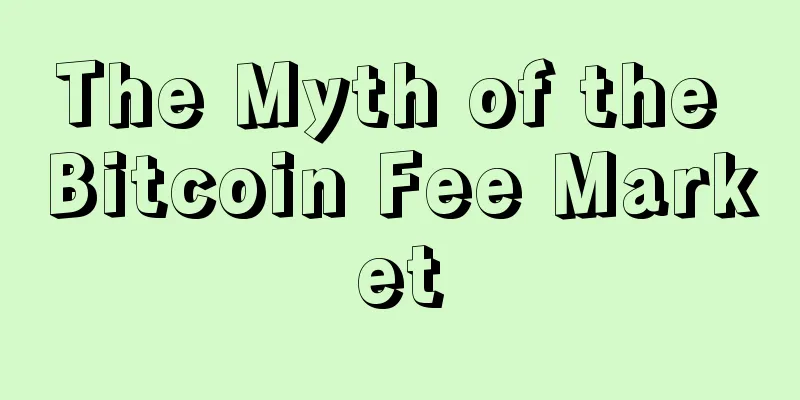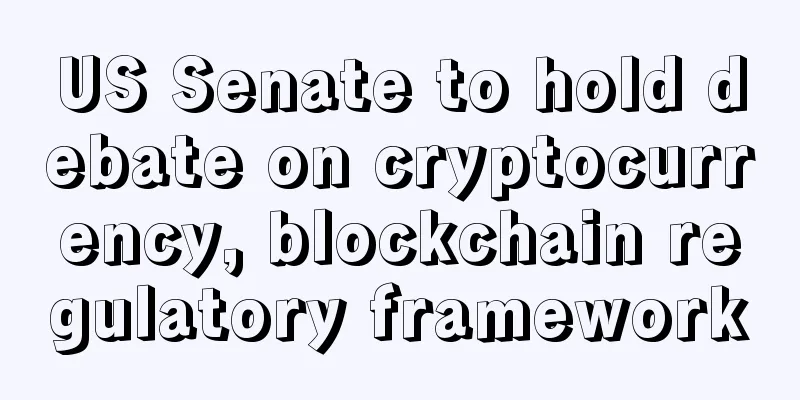The Myth of the Bitcoin Fee Market

|
I don't expect fees to be needed anytime soon, but if running a node becomes too onerous, it's possible that nodes will only process transactions that include a fee. The owner of the node will decide the lowest fee they will accept. Right now, such a node owner gets nothing because no one is paying the fee, but if enough nodes do this, then transactions will be confirmed faster with fees, and slower with nodes that don't include fees. Market competition will make it so that fees are the lowest possible. If a node demands a higher fee, it will be eliminated by other nodes that accept lower fees. Nodes that can process as many payments as possible will make more money. The transition is not about some person being in charge and controlling the system, just individuals responding to market forces.
Contrary to Satoshi's vision, there are now people who try to take responsibility for the system. Their goal is to keep Bitcoin's block size limit lower than it actually needs to be. One of the main assumptions made by this camp is that Bitcoin needs a "fee market" in which users compete with each other for the right to use the next block, so that their transactions are confirmed faster than those who pay less fees. The principle of the fee market is this: as time goes on, the Bitcoin block reward gradually decreases, and eventually no new Bitcoins are created, at which point Bitcoin mining needs to be completely subsidized by users paying transaction fees to miners. Therefore, it is better to implement a "fee market" sooner rather than later, so that users get used to the idea of bidding on transactions. What is overlooked in the discussion is that the Bitcoin block reward will last for at least a century. That means there is still 100 years before this fee market is actually needed, and the motivation for users to adapt to the fee market now is completely premature and even highly suspect at worst. The reason for the Bitcoin block reward, besides being a mechanism for issuing new Bitcoins, is also to serve as a subsidy to miners during the startup phase of Bitcoin. The reward is cut in half every four years (approximately), meaning that the subsidy is significant, and in terms of BTC production, it will gradually become less and less from the beginning. By the next block reward halving, around 2020, 87.5% of Bitcoins will have been issued. After another four years, the ratio of issued Bitcoins rises to 93.75%. This mechanism is such a fundamental part of Bitcoin that Satoshi even stated it in his January 2009 post to the Cryptography Mailing List when Bitcoin v0.1 was released:
This could be interpreted as support for a fee market, certainly an interpretation by some who have already supported limiting Bitcoin’s transaction capacity to less than actual market demand. But this interpretation is refuted by the following statement: When [the block reward subsidy] is exhausted, the system can support transaction fees as needed. Clearly, Satoshi had no intention of forcing users to competitively bid as long as the block reward could pay for the growth of the system. Instead, transaction fees are provided as an option to pay for Bitcoin’s security model if the block reward becomes insufficient (because nothing is free). It is true that higher transaction fees benefit miners. These fees currently account for about 5% of mining revenue, but most mining pools keep transaction fees for themselves and do not share them with hardware operators. This obviously means that Bitcoin mining is still profitable for hardware operators even after deducting transaction fees and mining pool fees. However, as I mentioned in a previous article, the less profitable the mining pool, the less incentive there is for new entrants, and only those mining pools with the lowest marginal costs will be able to win the competition. Only those with the largest economies or those who can afford the latest and most expensive hardware will be able to win the race. This essentially raises the barrier to entry and prevents smaller economies and older hardware from surviving. It is surprising that proponents of capacity limits, who make “miner centralization” a central concern, continually sidestep this obvious contradiction that undermines their entire platform. At the time of writing this article, the price of one Bitcoin is hovering around $790. This means that the 12.5 BTC reward issued every ten minutes is worth $9,875, and the fees per block are worth about $493.75. These fees are a nice bonus (for mining pools), but the real reward that miners are after is still the block reward. Easier than trying to force a shift to reliance on fee income is to make Bitcoin more valuable, thereby increasing the value of the block reward. This seems a little counterintuitive at first: it is surely easier to control fees than to control the free-market trading price of Bitcoin. In other words, it becomes more obvious. Twenty percent annual growth in the price of Bitcoin is enough to account for the block reward halving every four years. Anything above 20% is a windfall that not only encourages new entrants but also supports the continued profitability of old hardware. On the other hand, if transaction fees were to compensate for the block reward halving, assuming all other variables remain the same, transaction fees would increase by 1000% by 2020. This does nothing to encourage growth and decentralization in the mining industry, and also assumes that a small percentage of users agree to a 10x increase in transaction fees. With this perspective, it is easy to imagine that Bitcoin's low fees and fast transaction times are enough to promote a 20% annual price growth (while historically, annual growth rates and user growth have been much greater than 20%). Because of Metcalfe's law, the utility of the Bitcoin network and its price should grow quadratically, even if the number of users grows linearly. What happened to the dream of a $10,000 Bitcoin? We already knew that the price of Bitcoin doubled in a year, but now we are told that hoping for a price doubling every four years is too radical. Proponents of limiting the capacity of the Bitcoin network would argue that the bidding process is fine. They say, “If you want your transaction to be confirmed faster, just pay a higher fee.” If we assume that most users can enjoy Bitcoin’s fast confirmations as long as they pay enough in fees, perhaps this isn’t a big problem today (although it certainly still is). For this argument, I’m going to pull a number out of thin air and assume that 80% of transactions are able to be confirmed in the next block. If the number of transactions conducted on the network doubles, having a 1MB block size now means that only 40% of transactions can be confirmed in the next block, and these users pay higher priority fees. What does this mean for the other 60% of transactions? Their fees will go up too, even if they only need their transactions to be confirmed in the next two, three, or ten blocks. The end result is that fast confirmations become an exclusive resource that only a non-shrinking percentage of users can afford. This argument also assumes that demand for Bitcoin will continue to grow even if it becomes more expensive and less reliable — it won’t. The final fallacy of the fee market myth that I want to address is an incredibly simple one, and one that small blockers surprisingly don’t understand: whatever the cost of transaction fees is, even if that cost is next to nothing, it is the result of a fee market. If mining can be profitable based on block rewards alone, and miners adopt a minimum fee policy, then this is still the result of free market pricing of transaction fees. To suggest that a "fee market" is not a natural part of Bitcoin, but something that must be artificially induced by protocol layer developers is simply a product of basic economic ignorance. We are told that support for block size increases is simply a desire by “greedy Bitcoin miners” to collect more and more fees from a greater number of transactions. Yet, the next moment, we are told that fees must rise so that miners can make more money. Inconsistency aside, this would seem to imply that miners cannot be trusted to be greedy. Instead, their profitability must be externally regulated by a group of developers and central planners.
Bitcoin mining is not for charity. The “greed” of miners (better known as the pursuit of profit) is what has allowed the Bitcoin network to become the most powerful computing system in the world — with thousands of times more computing power than the world’s top 500 supercomputers. We should let miners be greedy. Bitcoin mining is only profitable as long as the network is healthy and in high demand. This is not a difficult concept to grasp. Miners (as a whole) cannot cause harm to the Bitcoin network without destroying their own profits. Bitcoin even has a built-in fault tolerance for malicious miners - as long as a simple majority of miners remain honest, then Bitcoin is secure. If the majority of miners were malicious, then Bitcoin would have already broken. The best way to prevent any entity from having a majority of the hashing power is to ensure that the profit motive for mining is always present, especially for new entrants.
I think the block size needs to be increased. |
<<: 2016 is almost over. Do you still remember these 10 major cryptocurrency events?
>>: Four reasons why 2017 will be a big year for blockchain
Recommend
What does a mole on the palm mean? What does it mean?
Traditional physiognomy covers a wide range, among...
What are the facial features of unlucky men?
What are the facial features of unlucky men? If y...
Antminer B3 will be available for sale at 11:00 am today (25th) with the first batch of 2,500 units.
At about 4:30 pm today, the Antminer sales WeChat...
Where can a man have a mole on his face to be successful?
Whether a man is ambitious or not can be seen fro...
What does a mole in the philtrum mean?
What does a mole in the philtrum mean? 1. Analysi...
What are the unlucky facial features?
The forehead is also known as the life palace in ...
The noble pattern is clear
Palmistry for Successful Entrepreneurship at the ...
Are people with straight noses more likely to be rich and successful?
A straight nose is generally very beautiful in ap...
Is long hair suitable for you?
A person's hairstyle is an important reflecti...
How to tell if a mole is getting worse?
As one of the traditional physiognomy techniques, ...
The founder of digital derivatives trading platform FTX is optimistic about the listing and believes that supervision will be clearer
In an interview with Bloomberg, FTX founder and C...
Tesla's "Butler" Zuck: Cook, who is as low-key as Jobs, opposes Musk's purchase of Bitcoin
Key Points ① Elon Musk has always been regarded a...
Australian lawmakers want to make Bitcoin a legal currency
On August 9, Australian lawmakers are working har...
Palmistry predicts the dangers of marriage
In this world, having money and power does not ma...
A girl who looks silly but knows everything inside has white front teeth and a low forehead
Women's minds are as unpredictable as the sea...









